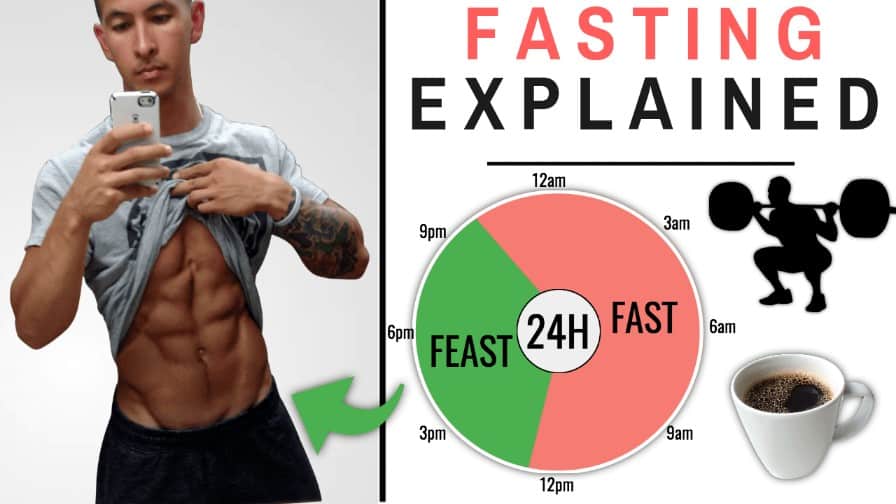
How to Use Intermittent Fasting Safely With Diabetes: A Comprehensive Guide
Intermittent fasting (IF) has gained considerable popularity as a dietary approach for weight loss and overall health improvement. However, for individuals with diabetes, navigating the world of IF requires careful consideration and a proactive approach. This comprehensive guide aims to provide a thorough understanding of how to use intermittent fasting safely with diabetes, addressing potential benefits, risks, and essential precautions.
The primary goal of this article is to offer clear, concise, and evidence-based information. It’s crucial to emphasize that this is not a substitute for professional medical advice. Always consult your healthcare provider before making significant changes to your diet or treatment plan, especially if you have diabetes.
Understanding Intermittent Fasting
Intermittent fasting is not a diet in the traditional sense. Instead, it’s an eating pattern that cycles between periods of eating and voluntary fasting on a regular schedule. Several different methods exist, with the most common being:
- 16/8 Method: This involves fasting for 16 hours a day and eating within an 8-hour window.
- 5:2 Diet: This involves eating normally for five days of the week and restricting calorie intake to 500-600 calories on the other two non-consecutive days.
- Eat-Stop-Eat: This involves fasting for 24 hours once or twice a week.
The underlying principle of IF is to allow the body to utilize stored fat for energy. During the fasting period, insulin levels decrease, allowing the body to tap into fat reserves. This can lead to weight loss, which can positively impact blood sugar control in individuals with diabetes.
Potential Benefits of Intermittent Fasting for People with Diabetes
When approached cautiously and under medical supervision, intermittent fasting may offer several potential benefits for people with diabetes. These include:
- Improved Blood Sugar Control: Studies suggest that IF can improve insulin sensitivity and lower blood glucose levels. This can be particularly beneficial for individuals with type 2 diabetes.
- Weight Loss: IF can facilitate weight loss by reducing overall calorie intake. Weight loss is a key factor in managing diabetes, as it can improve insulin resistance and reduce the risk of complications.
- Reduced Insulin Resistance: IF may help to reduce insulin resistance, making the body more responsive to insulin.
- Potential for Reduced Medication Needs: In some cases, improved blood sugar control through IF and lifestyle changes may reduce the need for diabetes medications. However, this must always be done under the guidance of a healthcare professional.
- Other Health Benefits: Some research indicates that IF may offer additional benefits, such as improved heart health and reduced inflammation. However, more research is needed in this area.
It’s important to reiterate that these are potential benefits, and individual results may vary. The suitability of IF for someone with diabetes depends on various factors, including the type of diabetes, current medication regimen, overall health, and lifestyle.
Risks and Precautions When Using Intermittent Fasting with Diabetes
While IF can offer potential benefits, it’s crucial to be aware of the risks and take necessary precautions, especially for those with diabetes:
- Hypoglycemia (Low Blood Sugar): This is a significant risk, particularly for individuals taking insulin or certain diabetes medications. Fasting can lower blood sugar levels, increasing the risk of hypoglycemia. Regular blood glucose monitoring is essential.
- Hyperglycemia (High Blood Sugar): In some cases, fasting can lead to hyperglycemia, especially if the eating window involves consuming excessive carbohydrates or unhealthy foods.
- Medication Adjustments: Individuals using insulin or other diabetes medications may need to adjust their dosages to accommodate the eating and fasting periods. This must be done under medical supervision.
- Nutritional Deficiencies: Improper meal planning during the eating window can lead to nutritional deficiencies. It’s essential to focus on nutrient-dense foods.
- Dehydration: Fasting can increase the risk of dehydration. Adequate fluid intake is vital.
- Other Potential Side Effects: Some individuals may experience side effects such as headaches, fatigue, irritability, or digestive issues.
The risk of hypoglycemia is a critical concern when considering how to use intermittent fasting safely with diabetes. Careful planning and monitoring are paramount.
How to Use Intermittent Fasting Safely With Diabetes: Practical Guidelines
If, after consulting with your healthcare provider, you decide to try intermittent fasting, follow these practical guidelines to minimize risks and maximize potential benefits. Remember that this is a personalized journey, and what works for one person may not work for another.
- Consult Your Doctor: This is the most crucial step. Discuss your plans with your doctor or a registered dietitian. They can assess your individual health profile, medication regimen, and lifestyle to determine if IF is appropriate for you. They can also help you develop a safe and effective plan.
- Blood Sugar Monitoring: Regularly monitor your blood sugar levels before, during, and after fasting periods. Keep a detailed log of your readings and any symptoms you experience.
- Medication Adjustments: Work closely with your doctor to adjust your diabetes medications as needed. This may involve reducing dosages or changing the timing of your medications. Never adjust your medications on your own.
- Meal Planning: Plan your meals carefully during your eating window. Focus on nutrient-rich foods, including lean protein, healthy fats, complex carbohydrates, and plenty of non-starchy vegetables. Avoid processed foods, sugary drinks, and excessive amounts of simple carbohydrates.
- Hydration: Drink plenty of water throughout the day, especially during fasting periods. Dehydration can worsen blood sugar control and increase the risk of other complications.
- Start Slowly: Begin with a less restrictive approach, such as the 12/12 method (12 hours of fasting and 12 hours of eating), and gradually increase the fasting duration as tolerated.
- Listen to Your Body: Pay attention to how your body feels. If you experience any adverse symptoms, such as dizziness, headaches, or excessive fatigue, stop fasting and consult your doctor.
- Consider Professional Guidance: Working with a registered dietitian or a certified diabetes educator can provide personalized guidance and support. They can help you create a meal plan, monitor your blood sugar, and make necessary adjustments to your IF plan.
- Be Prepared: Have a plan for managing low blood sugar. Carry fast-acting carbohydrates, such as glucose tablets or juice, to treat hypoglycemia if it occurs.
- Regular Check-Ups: Schedule regular check-ups with your doctor to monitor your progress and make sure that intermittent fasting is safe and effective for you.
These guidelines are essential for anyone considering how to use intermittent fasting safely with diabetes. Remember, safety and health are paramount.
Specific Considerations for Different Types of Diabetes
The approach to intermittent fasting may vary depending on the type of diabetes:
- Type 1 Diabetes: Intermittent fasting is generally not recommended for individuals with type 1 diabetes due to the increased risk of hypoglycemia and the complexity of managing insulin dosages. However, some individuals with type 1 diabetes may try IF under strict medical supervision.
- Type 2 Diabetes: Intermittent fasting may be a viable option for individuals with type 2 diabetes, especially those who are overweight or obese. However, it’s crucial to work closely with a healthcare provider and monitor blood sugar levels carefully.
- Gestational Diabetes: Intermittent fasting is generally not recommended during pregnancy. If you have gestational diabetes, focus on a balanced diet and regular exercise, under the guidance of your healthcare provider.
The specific needs of each individual with diabetes must be considered.
The Role of Diet and Exercise
Intermittent fasting is most effective when combined with a healthy diet and regular exercise. Focus on a balanced diet rich in whole, unprocessed foods. Regular physical activity can improve insulin sensitivity and help manage blood sugar levels. Before starting any exercise program, consult your healthcare provider.
Conclusion: Navigating Intermittent Fasting with Diabetes
The decision of how to use intermittent fasting safely with diabetes is a personal one that requires careful consideration. While IF may offer potential benefits, it’s essential to prioritize safety and work closely with your healthcare provider. By following the guidelines outlined in this article, you can make informed decisions and minimize the risks associated with this dietary approach. Remember that the information provided here is for educational purposes only and should not replace professional medical advice. Always consult your doctor or a registered dietitian before making any changes to your diet or treatment plan.
Intermittent fasting can be a tool in your diabetes management plan, but it is not a cure-all. A comprehensive approach that includes a healthy diet, regular exercise, and appropriate medication is crucial for optimal health outcomes.
This article provides information on how to use intermittent fasting safely with diabetes. It is critical to consult with healthcare professionals.
[See also: Related Article Titles]

